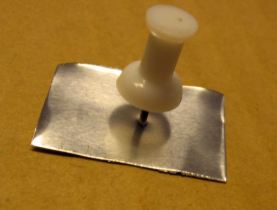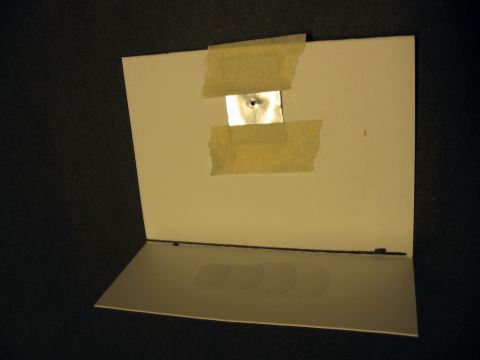
Fold a small card (~ 8 cm X 15 cm) as shown.
Punch a hole through the upper part of the card and tape the aluminum
piece with pinhole over the hole in the card.
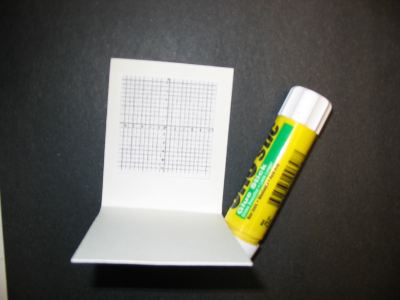
Fold a small piece of card (~ 6 cm x 15 cm) as shown.
Glue a small piece of graph paper to the card.

If you don't have any graph paper, print this image.
("Right Click" then choose save image)
You can glue it to the above card.
After you print the graph paper measure the distance between the lines.
Ideally the distance is 1 or 2 mm, if not use a graphics program to make
the image larger or smaller.
Experiment until you get the size right.
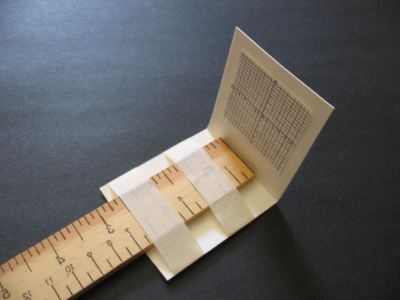
Tape the graph card to one end of a meter stick as shown.

Tape the pinhole card to the other end of the meter stick.
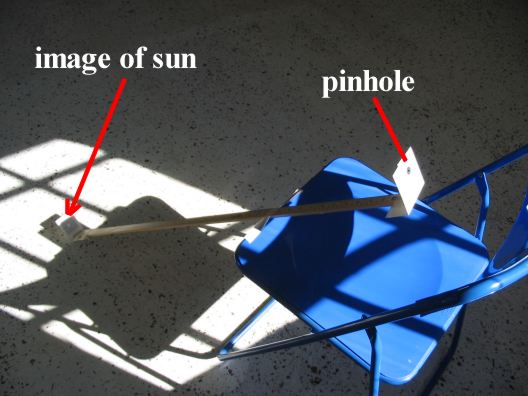
Align the meter stick so that the sun shines through the pinhole onto the
graph paper.
Carefully count the number of lines that the image spans on your graph
paper.
If you know how far apart the lines are on the graph paper you can calculate
the size of the image.

This is what the sun's image looks like on the graph paper.
The lines on this graph paper are 2mm apart.
The sun's image is ~ 9.5 mm.
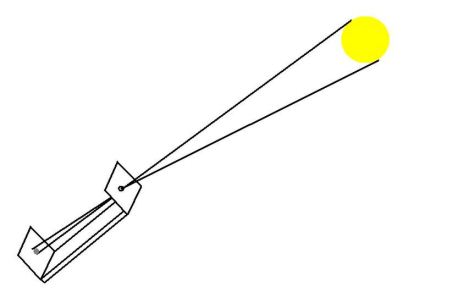
Your equipment has created two similar isosceles triangles.
(Completing this project requires some knowledge of basic geomtry and algebra)
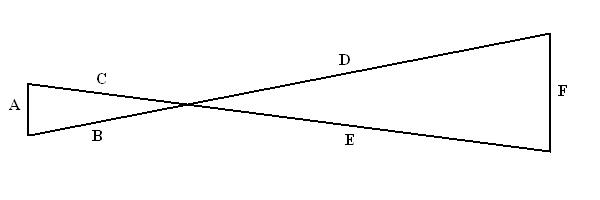
Isosceles triangle ABC is similar to triangle FED.
This means the angles are the same.
Angle B-C = Angle E-D
Angle A-B = Angle E-F = Angle A-C = Angle D-F
Also the ratios: A/B = F/D
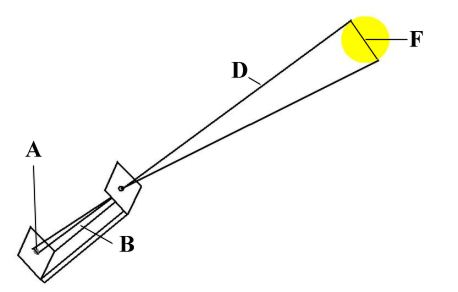 You know 3 of the values in the above drawing.
A = the diameter of the sun's image (~ 9.5 mm)
You know 3 of the values in the above drawing.
A = the diameter of the sun's image (~ 9.5 mm)
B = the meter stick (1 meter or 1000 mm)
D = the distance to the sun (150, 000, 000 km)
F = diameter of sun (unknown)
Remember A/B = F/D
or
F = (A x D)/B
F = (9.5 mm x 150000000 km)/1000 mm
F = 1 425 000 km
Estimated diameter of sun = 1 425 000 km
Actual diameter of sun = 1 391 978 km
Extra Information:


